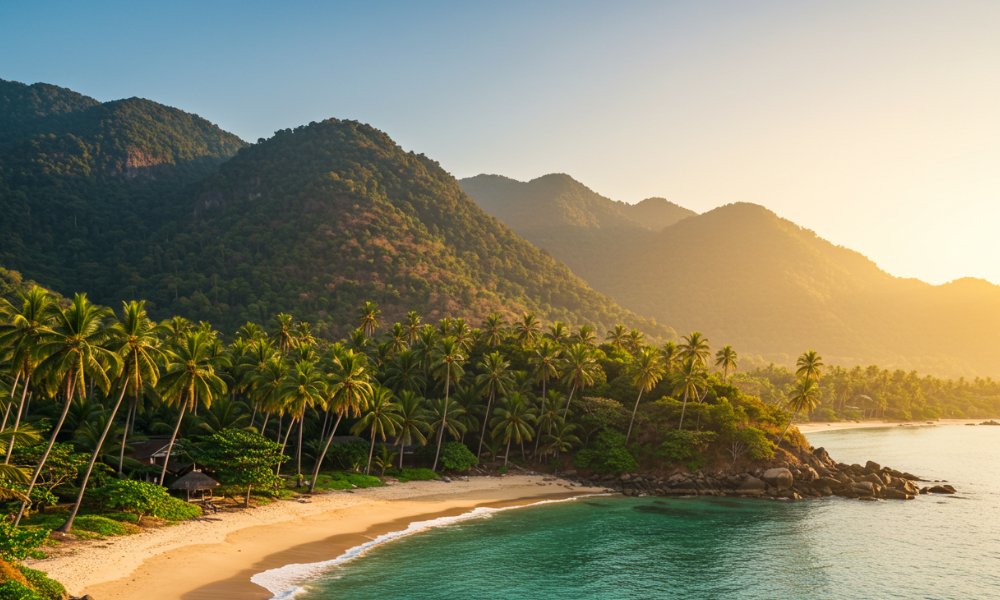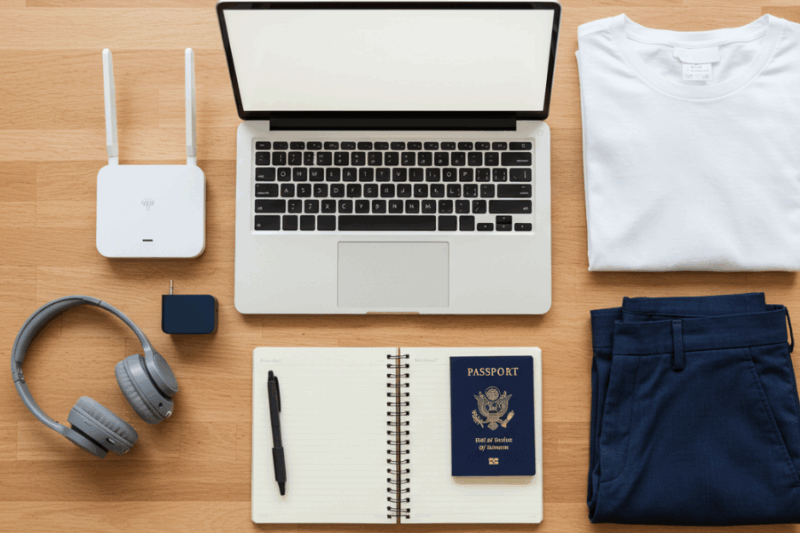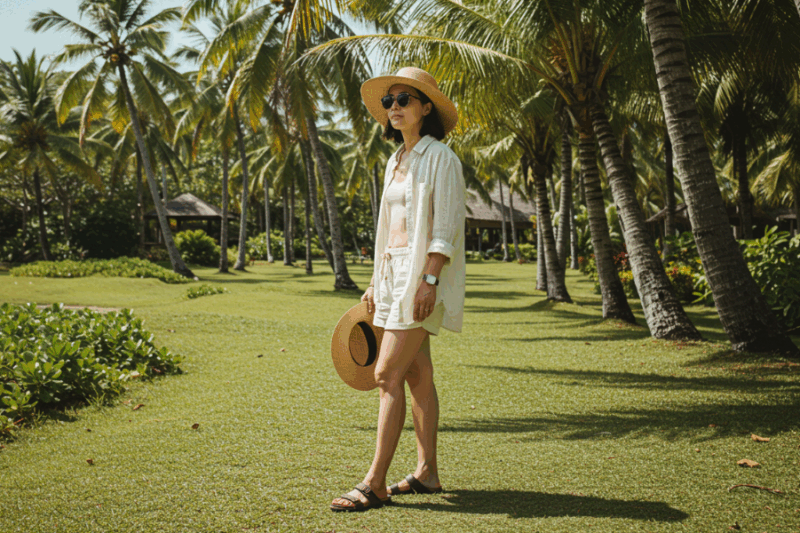Southeast Asia, with its vibrant cultures, stunning landscapes, and affordable travel options, is a dream destination for many. However, its tropical climate means weather can vary dramatically across seasons and countries. To make the most of your trip—whether you’re exploring temples in Thailand, beaches in Bali, or markets in Vietnam—timing your visit for optimal weather is key. For minimalist travelers, perfect weather means fewer packing hassles, easier mobility, and more opportunities to enjoy outdoor experiences without battling rain or extreme heat. This guide breaks down the best times to visit Southeast Asia’s popular destinations, focusing on dry, comfortable conditions while keeping your travel light and budget-friendly.

Understanding Southeast Asia’s Climate
Southeast Asia’s tropical climate generally splits into two main seasons: dry and wet (monsoon). Some areas also have a hot season, with temperatures soaring above 90°F (32°C). The dry season, typically from November to April, offers cooler temperatures and lower humidity, ideal for sightseeing and outdoor adventures. The wet season, from May to October, brings heavy rains and occasional typhoons, which can disrupt travel plans but offer lush scenery and fewer crowds. Timing varies by country due to geographic differences, so let’s explore the best months for key destinations, tailored for minimalist travelers who value simplicity and flexibility.
Thailand: November to February
Thailand’s cool, dry season (November–February) is the sweet spot for visiting Bangkok, Chiang Mai, or Phuket. Expect temperatures between 70–85°F (21–29°C) and minimal rainfall, perfect for temple-hopping, street food tours, or beach days. In Bangkok, you can comfortably explore Wat Arun or the Grand Palace without sweating through your minimalist capsule wardrobe. Chiang Mai’s mountain air feels crisp, ideal for hiking or visiting Doi Suthep. Phuket’s beaches are at their best, with clear skies for snorkeling.
Why Visit Now: Comfortable weather for packing light (a few t-shirts, shorts, and sandals suffice).
Tip: Book accommodations early, as this is peak season. Opt for hostels or Airbnb to keep costs low.
Avoid: March–May (hot season) when temperatures hit 95°F (35°C), and June–October (wet season) for heavy rains.
Vietnam: February to April
Vietnam’s climate varies by region, but February to April offers pleasant weather nationwide. In Hanoi, expect mild 65–80°F (18–27°C) days, perfect for strolling the Old Quarter or cruising Halong Bay. Central Vietnam (Hoi An, Da Nang) sees sunny skies and 70–85°F (21–29°C), ideal for beach visits or exploring ancient ruins. Southern areas like Ho Chi Minh City are warm but manageable at 80–90°F (27–32°C), great for Mekong Delta tours. Packing light is easy—just a few breathable outfits and a rain jacket for occasional showers.
Why Visit Now: Balanced weather for exploring diverse regions with minimal gear.
Tip: Stay in guesthouses or homestays for budget-friendly, local experiences.
Avoid: June–September in the north and central regions due to typhoons and heavy rain.
Indonesia (Bali): April to September
Bali’s dry season (April–September) brings sunny days and 80–85°F (27–29°C) temperatures, perfect for Ubud’s rice terraces, Seminyak’s beaches, or temple visits like Uluwatu. Humidity is lower, making it easier to pack light and stay comfortable while hiking or cycling. This period avoids the heavy rains of the wet season (October–March), which can flood roads and disrupt plans. For minimalist travelers, Bali’s dry season means you can focus on experiences like yoga retreats or local markets without worrying about weather-related cancellations.
Why Visit Now: Ideal for outdoor activities and minimal packing (swimwear, light clothing).
Tip: Rent a scooter to explore affordably, and choose budget bungalows over resorts.
Avoid: December–February, when monsoon rains can make travel challenging.
Cambodia: November to March
Cambodia’s dry season (November–March) offers comfortable 70–85°F (21–29°C) weather, perfect for exploring Angkor Wat in Siem Reap or relaxing in Sihanoukville. The lack of rain ensures clear skies for sunrise temple tours and easy navigation of rural areas. Phnom Penh’s markets and historical sites are more enjoyable without the wet season’s mud and humidity. Minimalist travelers can pack a small backpack with essentials like breathable shirts and a hat, focusing on cultural immersion over material comforts.
Why Visit Now: Dry conditions simplify travel logistics and reduce packing needs.
Tip: Use tuk-tuks for cheap, flexible transport, and stay in local guesthouses.
Avoid: April–May (scorching heat) and June–October (heavy rains and flooding).
Malaysia: December to February (West), June to August (East)
Malaysia’s weather varies between its western (Kuala Lumpur, Penang) and eastern (Borneo, Perhentian Islands) regions. For Kuala Lumpur and Penang, December to February brings dry, pleasant 75–85°F (24–29°C) weather, ideal for exploring street art or Batu Caves. In eastern Malaysia, June to August is best for diving in Sipadan or hiking in Borneo, with clear skies and 80–90°F (27–32°C). Minimalist travelers can stick to a carry-on with versatile clothing, as Malaysia’s urban and natural attractions are accessible year-round with strategic timing.
Why Visit Now: Region-specific dry seasons maximize outdoor exploration.
Tip: Pack a reusable water bottle to stay hydrated and reduce waste.
Avoid: Monsoon seasons (October–December in the east, March–May in the west).
Practical Tips for Minimalist Travelers
- Pack Light: Stick to a capsule wardrobe (5–7 clothing items) suitable for warm weather—think breathable fabrics and neutral colors. A single carry-on avoids baggage fees.
- Check Weather Patterns: Use apps like AccuWeather to confirm dry season dates, as they can shift slightly year to year.
- Book Flexibly: Choose refundable accommodations or hostels to adapt to unexpected weather changes.
- Prioritize Free Activities: Dry weather is perfect for hiking, beach days, or free cultural festivals, keeping your budget lean.
- Travel Slow: Stay longer in one spot (e.g., a month in Chiang Mai) to negotiate better rates and reduce transport costs.
- Prepare for Humidity: Even in dry seasons, pack a light rain jacket and quick-dry clothing for occasional showers.
Why Timing Matters for Minimalist Travel
Choosing the right time to visit Southeast Asia aligns perfectly with minimalist principles: less packing, less stress, and more focus on experiences. Dry, comfortable weather means you can travel with just a backpack, avoid costly weather-related disruptions, and spend more time enjoying temples, beaches, and local food rather than managing gear or dodging rain. By planning around the dry season, you’ll maximize your budget and minimize hassle, creating space for meaningful adventures.
Whether you’re chasing sunsets in Bali or exploring Hanoi’s bustling streets, timing your trip for perfect weather ensures a seamless, budget-friendly journey. So, grab your carry-on, pick your season, and dive into Southeast Asia’s beauty with less to carry and more to discover. When will you plan your trip?



